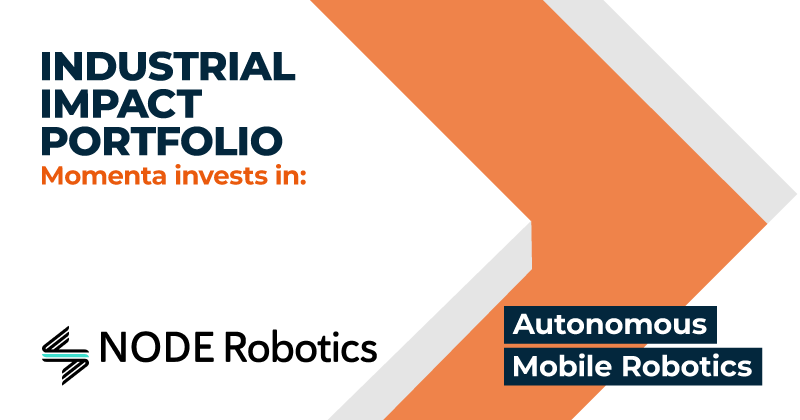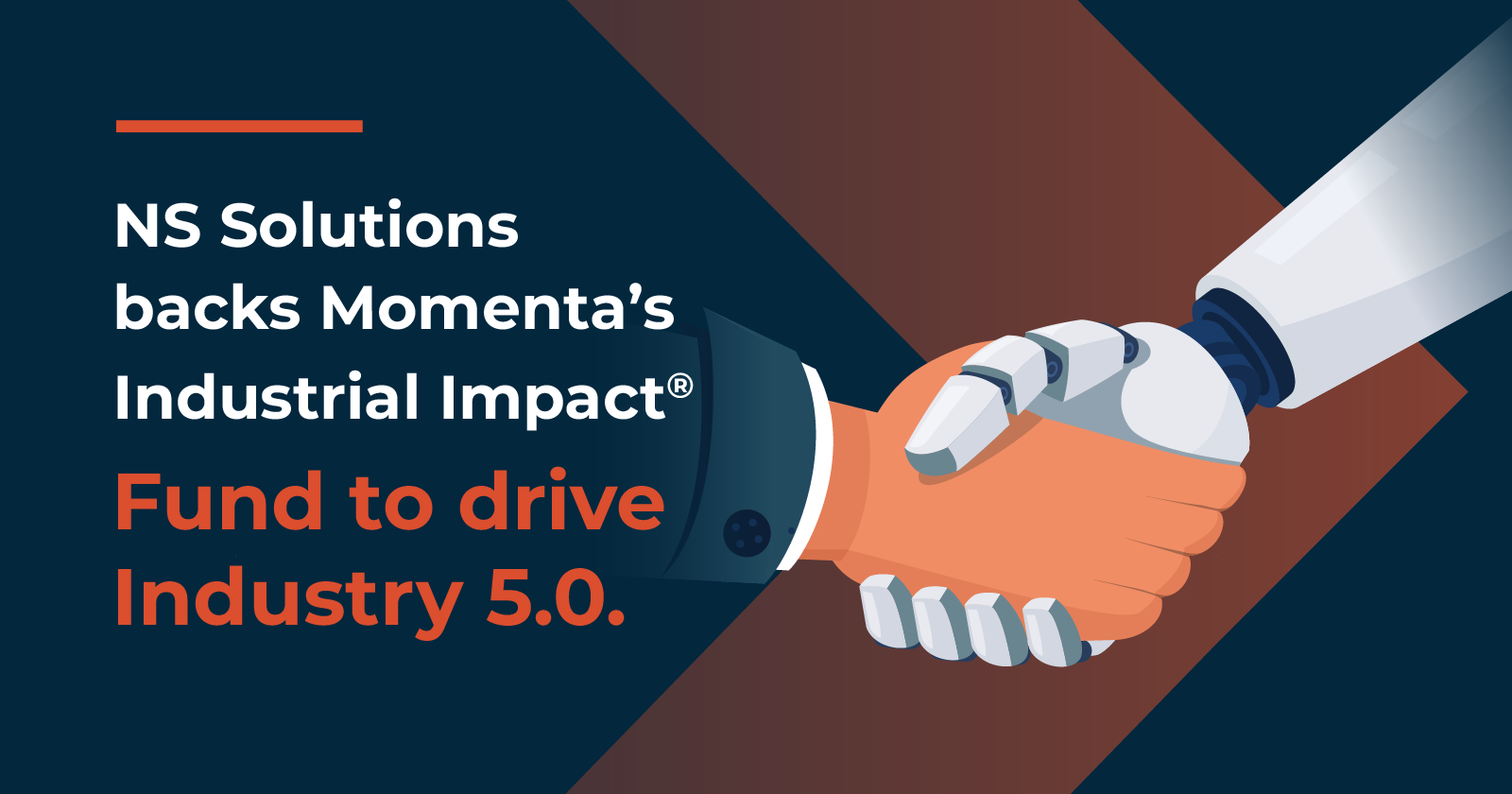Momenta's Take: Automation to Autonomy
Ed Maguire
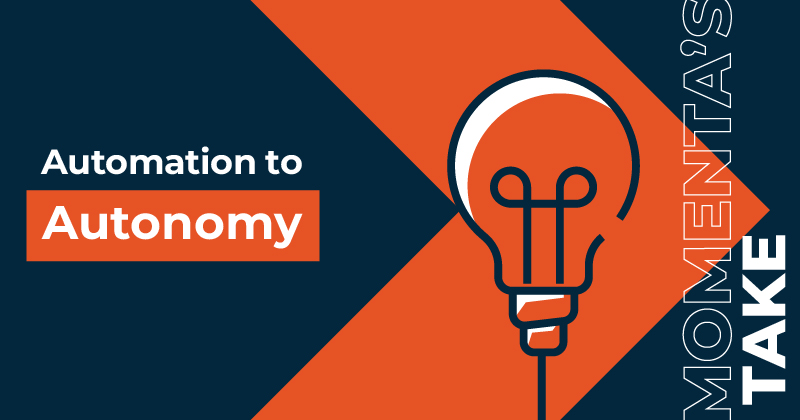
Driving Forward: The Future of Autonomous Mobility
There has been tremendous excitement about the potential benefits of fully autonomous vehicles, with McKinsey forecasting $300-400 billion in incremental revenues from autonomous driving and ASAS systems by 2035. Autonomous driving technology promises to reshape transportation economics while improving safety for passengers, but regulatory compliance remains a gating factor for widespread adoption on public roads. For uses such as mining and agriculture, autonomous vehicles are not subject to highway regulations, making adoption more closely reliant on ROI and technological capability.
From Industrial Automation to Autonomy
The same technologies enabling autonomous vehicles are also being applied to broader uses in industry in an effort to move beyond simple automation (and remote control) to true autonomy. Companies in logistics, warehousing, agriculture, healthcare, and other industries are turning to Autonomous Mobile Robots (AMRs). AMRs are able to understand and navigate their tasks independently, differing from autonomous guided vehicles that depend on tracks or predefined paths and often require an operator to oversee. AMRs are equipped with sensors in order to identify and steer clear of obstacles (such as human beings and machinery) – tasks are preprogrammed. Still, applications are more flexible because they are not constrained to follow fixed guide systems (such as the electrical wires on a trolley system).
Making Control Systems Autonomous
Core to autonomous systems is the use of AI to help systems learn to complete tasks independently through trial and error. Microsoft’s Project Bonsai is a low-code AI Platform designed to help developers create automation for complex processes in complex scenarios such as manufacturing, chemical processing, climate system management, and logistics. The technologies needed for AMRs build upon simple automation and robotics, adding location awareness sensors, cameras, software, and localized analytics that can communicate with actuation systems in real-time. What’s evolving is the ability of these systems to learn on the fly and continuously optimize.
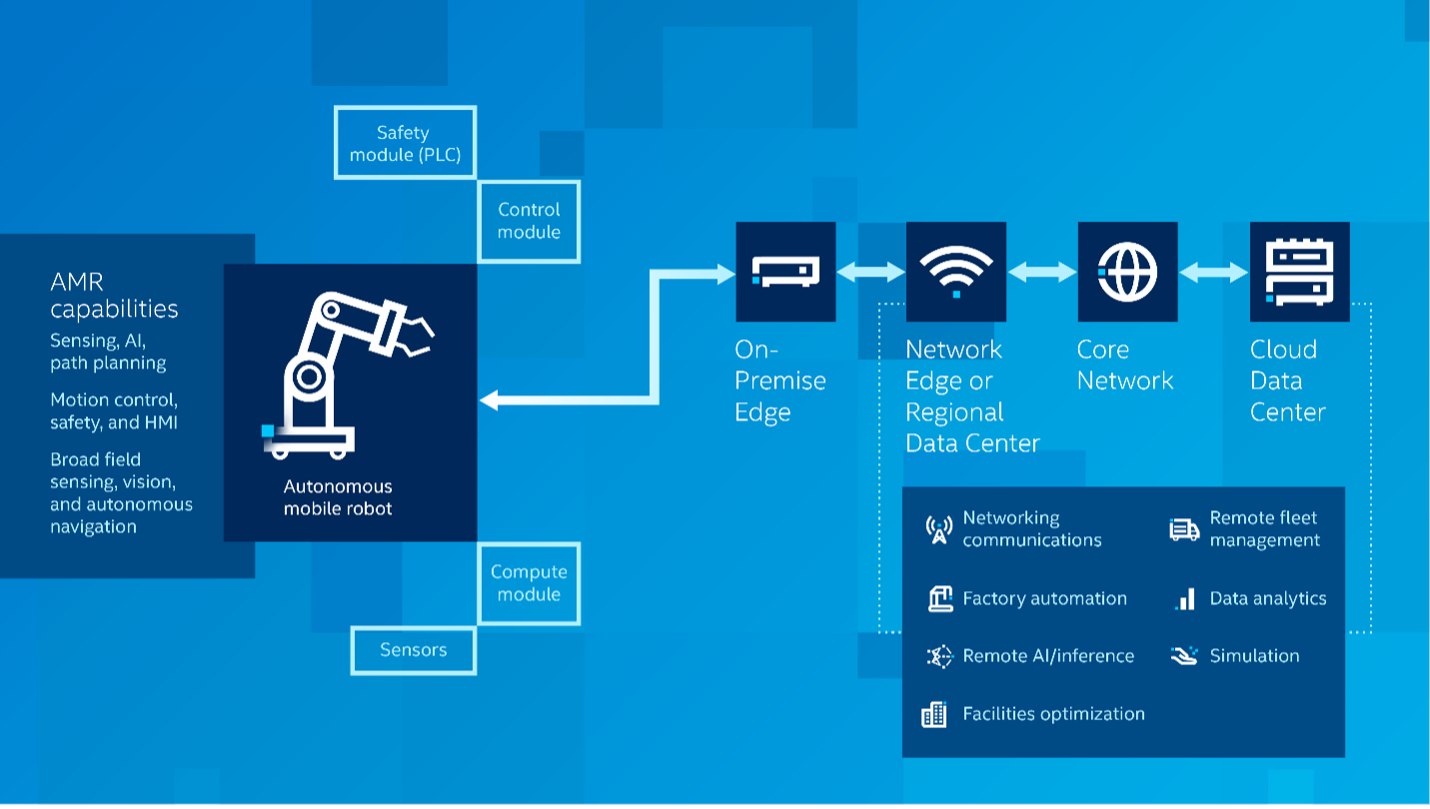
Source: Intel Autonomous Mobile Robots Overview
Autonomous bots can come in a wide range of shapes and sizes. Some can fly, some use wheels, some walk on two or more legs, and some employ a combination of modalities. Robotics provider Yokogawa uses living organisms as a blueprint for the type of mobility needed by different autonomous systems, such as beetles, crabs, dogs, geckos, honeybees, snakes, and spiders for inspection, manipulation, transport, and security, among other uses.
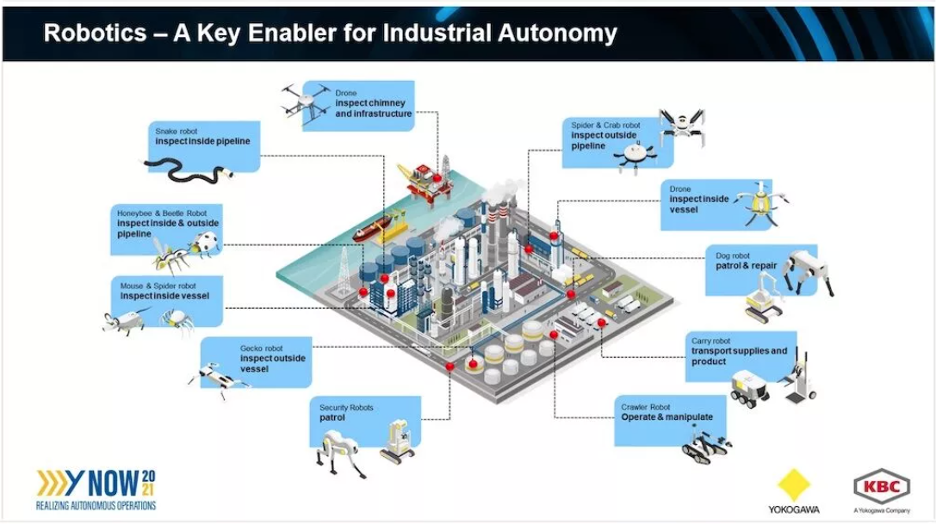
Source: Yokogawa
Significant Impact Across Digital Industries
The success of the Roomba evidences the success of a consumer-focused AMR. Looking forward, autonomous systems are poised to drive significant value in a number of areas:
Warehousing and logistics – AMRs can be used to transport materials and orders across shipping facilities, perform order fulfillment, handle returns, sort parcels, manage inventory, palletize, and lift heavy loads. Autonomous systems can “see” obstacles, avoid collisions and optimize traffic flow.
Manufacturing – AMRs can be used to transport in-process parts and finished goods and integrate with conveyors and robotic arms to sort, pick, pack, and move products.
Healthcare – AMRs can streamline the transport of supplies and medicine throughout a healthcare facility and provide disinfection and decontamination with UV lights and sprays, reducing exposure of potential pathogens to human workers.
Agriculture – Autonomous technologies have the potential to alleviate labor shortages, assist with planting and harvesting and perform surveillance and monitoring. According to Global Market Insights, the market for autonomous Farm Equipment is forecast to reach $95bn by 2027. Agtonomy is a notable startup focused on helping integrate driverless tractors with a full analytics platform to optimize food production.
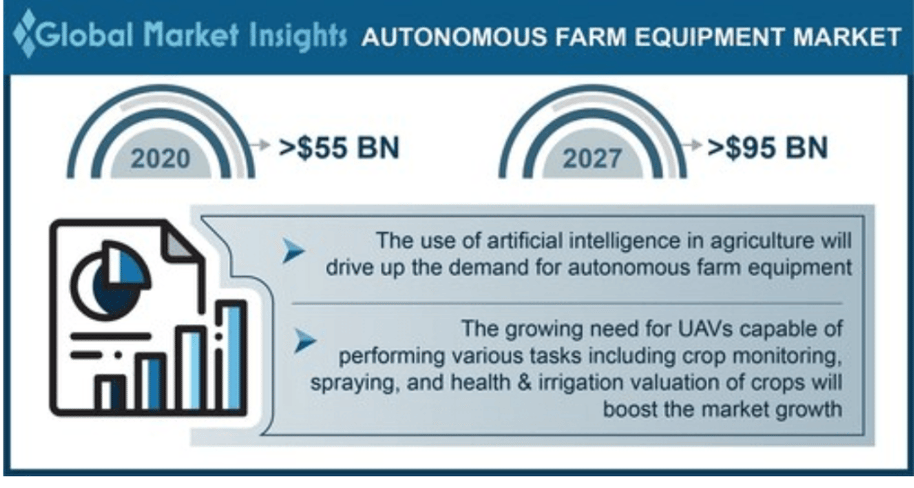
Agriculture’s growing needs are driving the autonomous farming equipment market. Image: Global Market Insights
Autonomous mobility, powered by true autonomy and advanced AI, is revolutionizing industries. Despite regulatory challenges for fully autonomous vehicles, AMRs are being embraced across various applications. With advancing technology and AI-driven automation, the possibilities for autonomous mobility are boundless. Embracing these transformative technologies will enhance efficiency and productivity, and drive unprecedented innovation in manufacturing, healthcare, agriculture, and beyond. Inspired by living organisms, these versatile systems streamline material transport, order fulfillment, disinfection, and aid in agricultural tasks. The future of autonomous mobility is bright, and its impact is set to shape the way we work, travel, and live in the years to come.

Momenta is the leading Industrial Impact venture capital + growth firm. We accelerate entrepreneurs and leaders devoted to the digitization of energy, manufacturing, smart spaces, and supply chains. Since 2012, our team of deep industry operators have made over 100 investments in entrepreneurs and helped scale over 150 industry leaders via our award-winning executive search and strategic advisory practices.


